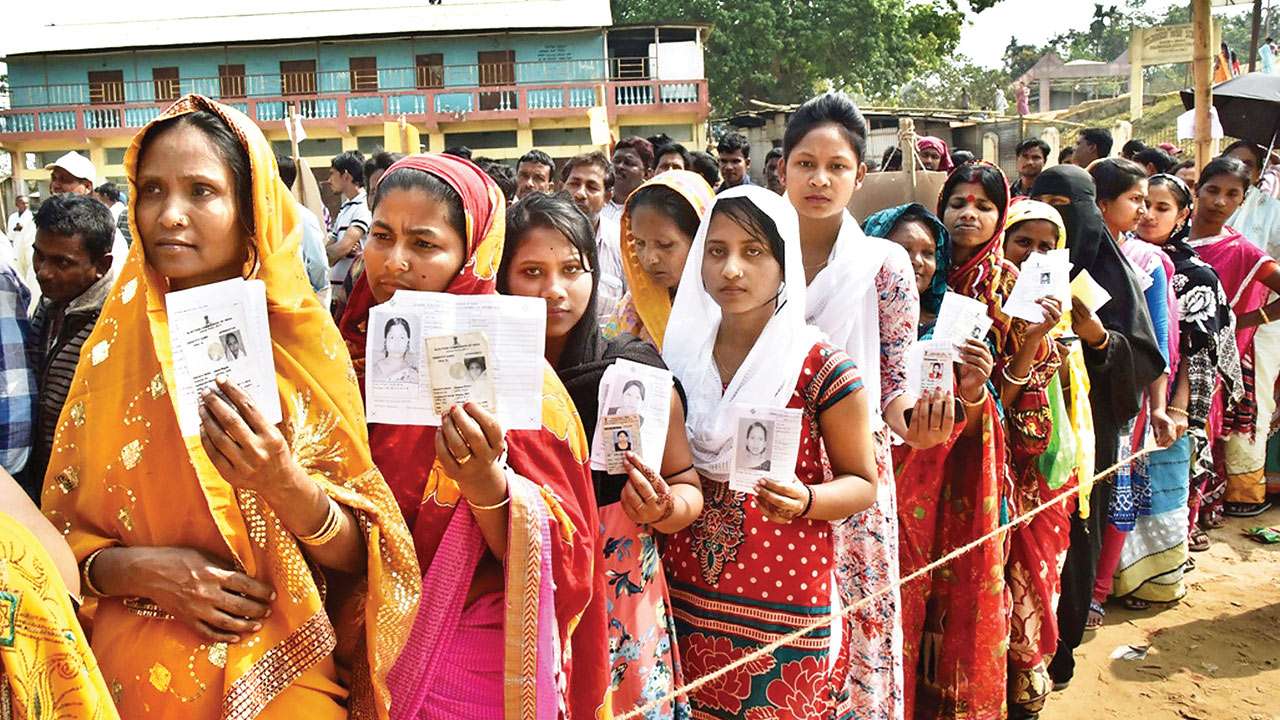
Recently, in its draft report, the Law Commission of India has backed “one nation, one poll” as an antidote to keeping the country perennially in election mode. According to the panel, such an exercise would save public money, help reduce the burden on the administrative setup and security forces and ensure better implementation of government policies. This practice, which was there from 1952, got disrupted due to premature dissolution of some State Legislative Assemblies in 1968. Lok Sabha itself was dissolved prematurely in 1970.
But what exactly is needed to ensure that this does indeed happen? Article 172 in the Indian Constitution about the Duration of State Legislatures states, “Every Legislative Assembly of every State, unless sooner dissolved, shall continue for five years from the date appointed for its first meeting...” However, to hold elections to these Assemblies along with the Lok Sabha election, amendment of Article 172 of the Constitution as well as of Section 14 of the Representation of People Act, 1951 will become necessary. Only in case of premature dissolution of the Assembly, a window of six months is available for the Election Commission to conduct the elections. Simultaneous polls across the nation would be possible only after these constitutional provisions are amended.
Now, amending Article 172 is a laboured possibility. This can be done by passing the requisite bill in Parliament, by the ruling party, followed by the same bill (paving way for simultaneous polls for Lok Sabha and all state Assemblies) being passed in more than half of the states (as BJP controls directly or with partners as many as 19 states today out of 29 State and Union Territory Assemblies), and finally ratified by the President of India.
The other, easier, possibility is that BJP-controlled state Assemblies are dissolved by their respective state governments soon enough, and the Election Commission then is duty-bound to hold fresh elections within six months, by the time we have due date for Lok Sabha polls, and hence, we have simultaneous polls to this extent. So, the considered opinion is that the BJP may go in for simultaneous polls of Lok Sabha and 20 odd states together within the scope of the current constitutional provisions, and this within 120 days from now. Alternatively, if an amendment is made, then the entire nation will have simultaneous polls. This is bound to lead to a political tsunami of sorts.
The BJP is very keen on the move as three concurrent moves by the party have revived the debate on the issue. BJP president Amit Shah has written to the Law Commission seeking its implementation to check expenditure and pull India out of a perpetual election cycle, while Prime Minister Narendra Modi has raised his voice, arguing that “frequent elections impede governance and development,” results in a drag on public exchequer and gives rise to “election fatigue” that is harmful for democracy.
It makes good sense for the BJP to get all Indian states or at least 16 to 18 of them to go along with the Lok Sabha polls and have simultaneous elections. They can then cash in on Opposition’s lack of cohesion, and quell local discontent, especially in Rajasthan and MP, and “presidentialise” the entire election process. The agrarian crisis can be quelled to an extent, more so with partial Minimum Support Price (MSP) being promised and politically there can be a few more regional parties joining pre-poll alliance (AIADMK, TRS, BJD) or at least kept ready for a post-poll alliance if needed.
A perpetual electoral season has made it impossible for leaders to pursue economic policies that bring long-term rewards when an anti-reform posture appears electorally more beneficial. Political discourse around reforms has become restrictive. Then there is the cost issue. The cost of an election has two components – one, expenditure incurred by the Election Commission and two, expenditure incurred by the political parties. A large number of government employees and public buildings are diverted from their regular responsibilities for election duties. There are undoubtedly benefits in conducting national and state elections together. Also, the imposition of the Model Code of Conduct every time an election is scheduled delays the implementation of Central and state government welfare schemes, infrastructure projects and takes away time and effort from governance issues.
During elections, political convenience takes precedence over public interest. To lure voters, political parties give in to popular demands without any thought to public interest. Simultaneous elections reduce such opportunity for political parties.
If the elections are to be held simultaneously once in five years, the elected state governments cannot be dismissed easily. This reduces the anomalies created by the Article 356 (President’s Rule) of the Indian constitution and hence, it strengthens federalism.
As the issue stands today, all signs are about India moving towards simultaneous polls for the Lok Sabha and up to 20 states together ahead, or through amendment in all states of the Union of India.
The author is a media academic and columnist, and currently the School Head, School of Media, Pearl Academy, Mumbai and Delhi. Views are personal.